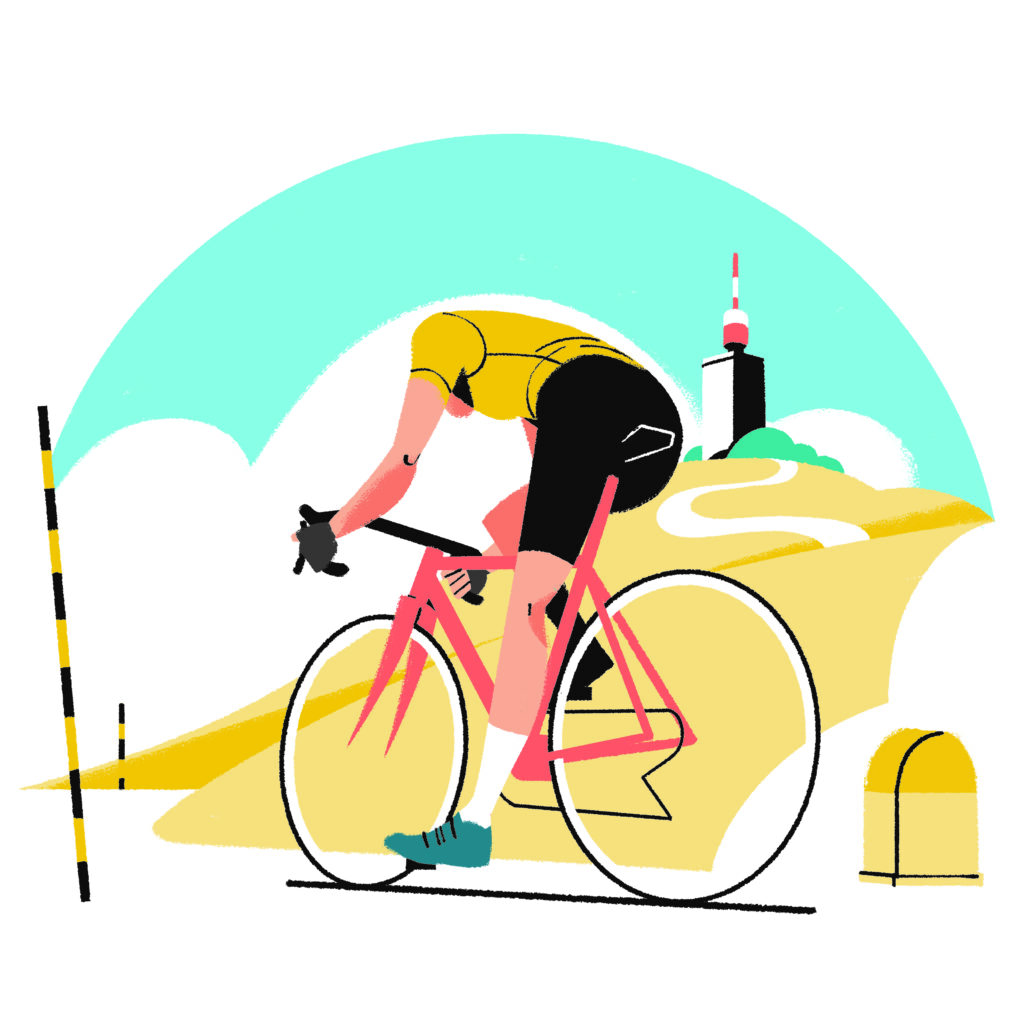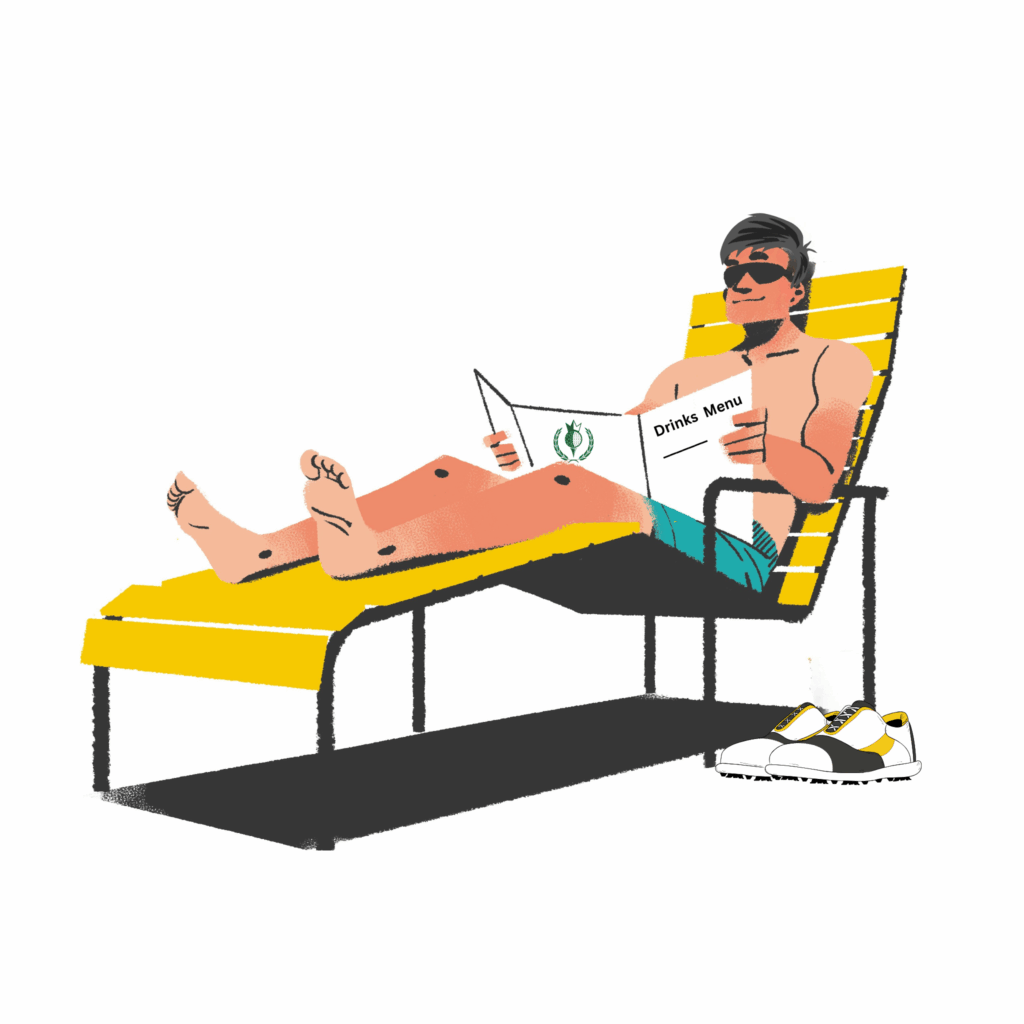
Photo: Christian Ferrer
The Vuelta a España arrives just in time to keep us all coasting the wave of pro-cycling fever. It may not have the grandeur of the Tour nor the majesty of the Giro, but what the Vuelta does have in abundance is unpredictability and a cruel number of hellishly steep climbs.
But how else does the Vuelta differ from the others? We’ve put together this guide to help decrypt the Vuelta a España, with a little help from Trek-Segafredo rider and wearer of the KOM jersey at this year’s Tour de France, Toms Skujins.
What is the Vuelta a España?
The Vuelta was established by Spanish newspaper Informaciones in 1935 with much the same motivation as its French and Italian counterparts some decades before – advertising. The Vuelta took place in the spring until 1995 when the race moved to its now familiar September slot, ending the Grand Tour calendar as we know it today.
Unlike the Tour and Giro, the Vuelta’s leader’s jersey has had a pretty colourful past. From orange to white, from yellow to gold, it wasn’t until 2010 that the Vuelta finally decided on the iconic red that is now synonymous with the race.
The Vuelta takes place over 21 stages with two well-deserved rest days. Far from inclined to ease the riders in, the Vuelta is notorious for filling its route with climbs, making for an incredibly tough race that many will struggle to finish. Skujins reminds us just how unpredictable this race can be:
“Think of Contador’s attack a few years back on an ‘easy’ day where he dropped the red jersey wearer, Rodriquez, and pretty much robbed his chances to finally win a GT. There’s so many little punchy climbs that the race profiles don’t even show you – I think you could probably make another two mountain stages out of them!”
The jerseys
With a different set of leaders’ jerseys at each Grand Tour it’s often difficult to remember just which colour means what. Thankfully the Vuelta and the Tour do have a little bit of crossover…
Red jersey: Awarded to the leader of the overall classification which – like the Tour’s yellow – is the rider with the fastest cumulative time across all the stages.
Green jersey: The leader of the points classification, with points awarded at intermediate sprints and over the finish-line. Unlike the other Grand Tours, the Vuelta does not weight points in favour of flat sprints, often resulting in a unique battle between mountain goats and sprinters. They never really meet on the road, but they are fighting for the same jersey.
Polka-dot jersey: Basically the same as at the Tour in that points are scored at the top of every classified climb, only with large blue dots rather than red. The target of many a Basque rider, this is a jersey with deeply patriotic roots.
White jersey: Contrary to what you’re probably thinking, the Vuelta’s white jersey goes not to the whipper snappers of the peloton, but to the rider with the lowest score in its ‘combined classification’, which works on a points system based on a rider’s position in all three above classifications. Simple enough, right?
The key stages
After a speedy prologue in Malaga, the race heads into lumpy terrain with climbs starting as early as stage 2. By stage 4, the peloton will already have crested their first category one climb and a massive summit finish atop the gruelling climb of La Alfaguara. Skujins describes how such a climb-heavy week one can impact a Grand Tour:
“The Vuelta always has climbs in week one, that’s just so ‘Vuelta’. It’s what makes it different. More climbing early on makes it even harder for the GC riders to take a ‘day off’, so by the end of the race everyone is that little bit slower with guys going backwards even on the smallest of climbs.”
Just before the first rest day, the riders take on the climb-laden stage 9, a day designed to throw the GC into disarray. A summit finish up the Alto de la Covatilla lies in wait after a 19.7km climb with double digit ramps which is bound to crack hopes and dreams. Stage 14 and 15 see yet more hellish summit finishes, and the second of them, the Lagos de Covadonga, is real brute with ramps of 17.5% in the finale.
The final week kicks off with a 32km ITT before introducing the riders to a trio of devilish mountain stages in Northern Spain and Andorra. Skujins, who rode through the hellish final week of this year’s Tour, explains the toll back-to-back mountain stage has on the GC riders:
“There are just so many days on this race that can shake things up, I believe the days in Andorra will be the most fun to watch – perhaps not race. For the GC guys it will mostly be about picking the day that they think they can do the most damage on, while also saving something for the other days. It’s almost impossible to do your best three days in a row.”
Stage 20, the final prong in this trident of mountain stages, is a short but extremely sharp mountainous affair. With six climbs in just 106km and a summit finish that ramps up to 18%, this is one stage that the organisers concocted in a bid to entertain the fans – at the expense of the riders. Skuijns welcomes the idea of short animated stages but suggests that there needs to be a balance:
“I think that stage twenty will be one of the toughest stages of the entire three weeks. I do like short stages in a Grand Tour, however without the longer, more gruelling ones the short stages wouldn’t be so interesting and exciting. It’s always a balancing act for the organisers.”
In all, the 2018 Vuelta consists of no less than nine summit finishes, two flat(ish) time trials, three sure-fire sprint stages, ten high mountain stages and six lumpy affairs that next to no one will be able to predict.
Riders to watch
For the first time since 2010, neither Alberto Contador nor Chris Froome will attend the Vuelta a España, two former winners who have animated the race for the best part of a decade. However, there will be four former winners, and an eclectic mix of Tour de France dropouts alongside riders who have had the Vuelta in their sights all season.
Richie Porte tops the favourites list, but he’s up against riders like Nairo Quintana, Alejandro Valverde, Rigoberto Uran and Miguel Angel Lopez for the overall title. Skujins, a former teammate of Rigoberto Uran, touts the Colombian as, “my favourite to actually win the overall,” while encouraging us all to, “keep a close eye on [George] Bennett and [Michal] Kwiatkowski as two of the dark horses”.
Other big names vying for the leader’s red jersey will be the British hopeful, Simon Yates – with his twin brother Adam playing super-domestique – Tom Dumoulin’s prodigy Wilco Kelderman, and everyone’s favourite gurning Italian, Fabio Aru. Vincenzo Nibali also heads to the Vuelta after crashing out of the Tour on Alpe d’Huez, but he assures the media that he is by no means riding for the GC – of course Vincenzo, of course.
Though sprint stages are lacking, the fast men are out in force. Elia Viviani and Peter Sagan will be the fastest men in the race, but they will face fierce competition from recently crowned European champion, Matteo Trentin, Italian come-back kid, Giacomo Nizzolo, and French boxer, Nacer Bouhanni.
Skujins reminds us that even though the Vuelta doesn’t have a jersey for the younger riders, this is often a race where we see them really shine:
“Sepp Kuss is going to do well, he’s in real good form at the moment. I expect Enric Mas to turn some heads yet again, especially if he didn’t grab some people’s attention last year.”
He also stresses that his Trek-Segafredo team are eager to build on their Tour de France success, even without his award-winning smile to build morale:
“You’ve got to keep an eye out for our Italians. Brambilla will be riding well in the mountains and definitely watch out for Nizzolo in the sprints!”
Be sure to follow Toms Skujins and his Vuelta updates throughout the next three weeks, this is set to be one exciting edition of the last Grand Tour of the year.


